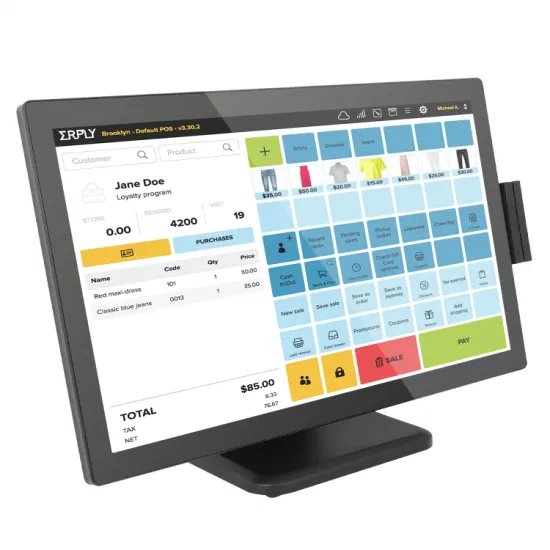Simple, and then increasingly advanced, electronics manufacturing started moving from the US to Japan in the 1960s as brands searched for lower costs. Subsequently, suppliers in other developing Asian countries provided even lower costs.
Labor intensive manufacturing moves like water. Water settles in the lowest point that has the fewest holes. Manufacturing settles in the lowest cost location with an infrastructure to support it. Once manufacturing leaves a country that generally means costs have increased as have the technical capabilities.
Countries like Japan, Korea, and Taiwan all started excelling at higher value technology development as their manufacturing industry shrunk. Starting in the 1990s, China, with its low cost and hungry workforce, grew to become the world’s electronics manufacturing capital.
With rising costs in China and robots replacing laborers (among other factors), countries which previously became too expensive for manufacturing, but now develop the world’s leading technology, may be able to use that higher value technology to reignite their own domestic manufacturing.
Moving final assembly to Asia resulted in the build-up of supply chain infrastructure and knowledge about getting things made. Through first-hand practice, development and assembly engineers gained practical experience, the key to optimizing processes. The number of engineers increased as demand for their services grew.
Entrepreneurs found ways to improve the efficiency of supply chains and logistics. While this development was happening in Asia, namely China, especially Shenzhen, the opposite was happening in the Western (US, EU, and for the sake of this article Japan, Korea, and Taiwan) world.
Demand for engineers related to production decreased while opportunities for advanced technology engineers remained robust. This makes sense since the infrastructure to support electronics manufacturing should be near to where the production actually happens and higher level engineers earn higher salaries, which was more possible in higher cost countries.
From a macro perspective, western cultures seem to produce more creative talents than Asian cultures. Of course, there are amazingly creative talents from Asia, some of whom even go through the western education system, but western and eastern cultures have embedded differences that put different values on individualism and creativity.
For years, and to this day, many top Chinese Android phone brands sell something that looks like an iPhone and rather than letting the world’s most successful websites serve the Chinese market, homegrown copycats springs up.
The Chinese are fast learners and China promotes commercial innovation with a more open entrepreneurial environment than the west, but fundamentally the education system in China (and Asia at large) teaches kids to follow instructions rather than think for themselves.
With such a large population and area, preserving long term civic stability maybe tied to limiting individual thought. In the west, there’s so much regulation that companies always seek approval before going big, while in China startups can flourish in unregulated spaces. While the west empowers innovators the east empowers risk takers.
As China develops, new (and usually good) regulations push up operating costs, creating a more level playing field with more regulated western countries. Salaries are also increasing. These changes result in a decrease in cost savings China can provide. A key change that’s already happening in global manufacturing is robots replacing humans.
China has built an incomparable electronics manufacturing infrastructure which will help it combat the global labor cost parity of ‘employing’ robots. There are teams of engineers who know how to design hardware, create or modify existing firmware, make parts fit together, and have a better work ethic with fewer demands than workers in the west.
If more Chinese factories start making capital investments into robots and other industry 4.0 practices they will prolong their upper hand as the infrastructure will serve to anchor production in China.
Factory workers in the west worry that their jobs are going to vanish with the onslaught of machines that can do a better job at a lower cost. How about the possibility that the western world can start to use their innovation edge to design manufacturing bases that shift the cost base from human labor to machine maintenance?
This would grow to manufacture in the west as well as add higher value jobs. The number of workers per factory will inevitably go down, but new factories that don’t currently exist would open.
A worker in the lowest cost parts of the US or EU still costs 2-3 times more than that same worker in China. If a manufacturing plant can reduce their staff count by 2-3 times and increase their output per head then the cost of non-labor overhead becomes the main cost driver, reducing the main advantage of manufacturing in a low-cost economy.
The work of the laborers becomes more valuable as their role changes from making products to maintaining machines. This has already happened with the heavy industry like car manufacturing. Doing that with smaller electronics is the next step.
Overcoming the challenge of building key infrastructure (supply chain, knowledge, logistics) in other parts of the world that already exists in Shenzhen will determine who wins. The majority of the cost driver components in Android tablets and smartphones like memory, screens, cameras, and IC chips still aren’t made in China (except on the low end).
In the short term, western countries won’t be able to compete with China production on low-end commodity products (and maybe shouldn’t try to either), but the real opportunity exists on higher-end production for tier 1 brands, bespoke products, industrial grade products, and any sort of higher value-added product.
Rebuilding the knowledge base in the west requires support from IC companies. At this point many of the world’s largest Android IC companies are based in China, for example, Rockchips, Allwinner, Actions, and Spreadtrum (although they all use core IP from ARM, a British company), with the notable exceptions of Qualcomm, Intel, MediaTek, and Freescale.
For western countries to take manufacturing seriously they need to give financial justification to the Asian IC manufacturers to open end product engineering support teams in the west. Both Asian and US IC companies will need to open source their development tools so many engineers have the ability to customize product designs.
Opening up development tools will allow engineers to work on products for niche markets and leverage their creativity to create higher value-added end products. Higher value add products align best with doing production in western countries because there’s more profit to support higher quality manufacturing and better protection of IP.
Read also:
Android Manufacturing: The 8 Crucial Stages Of Production
The Most Important and Often Overlooked Part of Custom Android Development
As the cost gap shrinks between Asia and the west more opportunities for manufacturing open up, especially for large size (due to shipping cost) and higher value-added products. The combination of applying western innovation to increase production efficiency mixed with support from governments to help build domestic infrastructures will drive these trends.
Some big companies have tried this recently and failed, such as Microsoft who moved to manufacture of the Surface Hub from Oregon to China, but the failures must be treated as lessons, not deterrents. At the very least it’s becoming more economically viable to explore manufacturing closer to the end customer and learn something along the way.
Yours truly, Ben Dolgin-Gardner, Hatch founder and Manufacturing Solution Expert


